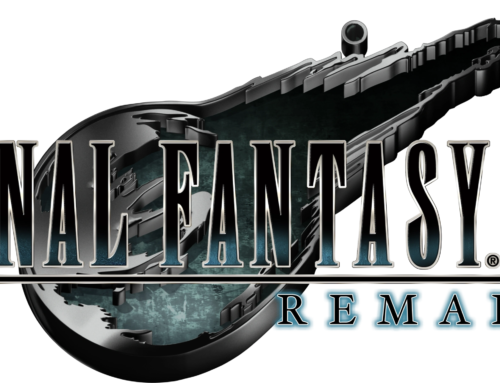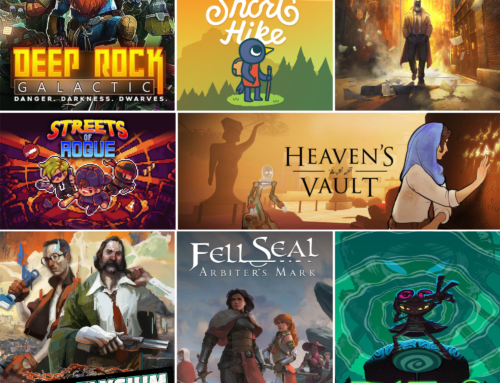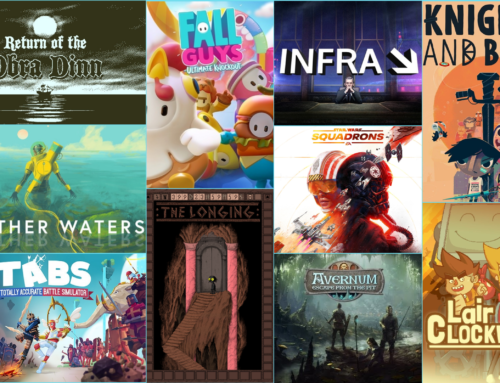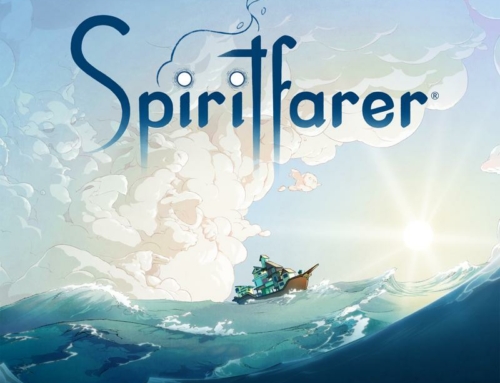An Open Letter Series
Author’s Note: This is the second letter in a four-letter series discussing Richard & Alice. You can find Part One here, Part Three here, and Part Four here. All posts contains spoilers for the entire game.
Hey Joanna,
Thanks for starting the letters off! I’m excited to see where this game club will take us.
First, I actually agree with pretty much everything you wrote, though I’d place a little different weight on your criticisms. You write that “The main question the game asks – what are people when it comes down to it – is, for me, old.” I am probably *even more tired* of the “people after the apocalypse are terrible” trope than you are (one of half a dozen reasons I don’t particularly like Telltale’s celebrated The Walking Dead adaptation); partially because there seem to be no original permutations on it, and partially because our collective obsession with it seems to arise from the exact sort of postmodern cynicism we both condemn.
But I actually liked Richard and Alice, and that is at least partially because I don’t feel like this terribleness is really the focus of the game. In a generic post-apocalyptic story, the focus would be on The Polar Bears, this game’s group of “survive at any cost” assholes, either as the (anti)heroes or as the antagonists. But here they are unseen background characters, as with pretty much all the apocalyptic elements; the story’s defining feature is its examination of the relationship between Richard and Alice. This is mediated by their society and past actions, but – possibly – not defined by it. I genuinely enjoyed their dialog and relationship (at least until the end – I’ll get to that at the end of this letter) and in a game this short, that’s mostly enough.
You note that “Richard’s role was basically to be a robot in the jail cell that could listen.” I don’t disagree, and yet these jail sequences were the ones I liked the most; the concept of the high-class (experimental) prison is probably the game’s most original idea, and the question of how being cellmates creates relationships between people is an interesting one. But mostly I just like the banter; I think the writing between the characters *is* good, and balances verisimilitude with the sort of wit and fast pacing we expect from short fiction. I’ll admit that I also liked the extremely constrained environment for puzzle solving; I like adventure game puzzles for breaking up the text dumps and providing a certain amount of challenge, but I hate pixel-hunting as much as the next guy, so one-room puzzles are always nice. This was also a pleasant contrast to the one genuinely terrible time I had with the game, during one of the flashback sequences. I spent fifteen minutes combing an area, first using logic, than pixel hunting, and finally try-everything-with-everything, before eventually walking into an area that loaded a separate screen that was not only not signposted, but put directly adjacent to areas that the game kept telling me not to go. That was pretty frustrating, and definitely the sort of problem that results from a lack of extensive playtesting (or, possibly, I’m just really dense).
All that said; as you know, I’m something of a formalist, and I wanted to discuss the more video-gamey aspects outside of the game. The first thing to note is that, with one exception I’ll get to in a bit, this is about as formally conservative a game as you can find. This shouldn’t be any surprise, since it was made using the AGS engine, originally released in 1997 as an easy-to-use engine for creating Sierra-style adventure games. While it remains in development today, it still was (as of 2013, when Richard & Alice came out) a very limited engine; if you try to do anything other than very traditional graphic adventures or stripped-down storygames with it, it tends to go haywire (as evidenced by all the bugs in Cart Life).
I mention this because the player’s first impression of Richard and Alice will likely be that the game is quite ugly; not just in the technical sense of being limited to 640×480, but in the sense that this clearly wasn’t the work of accomplished pixel artists, but rather a couple of guys who wanted to make a video game. As someone with zero talent for visual art, I find this inspiring; it turns out you don’t need to be a wunderkind to make a two-person video game and that you can have a critically acclaimed game even if the portrait art is off-putting and the animations are laughably bad. And all over the game are signs that the developers were eager to be part of the ‘indie games community,’ from the Analogue: A Hate Story TV show embedded in the game, to the indie-game references littered throughout (Chapter 2 is literally titled “Blocks That Matter,”) to the way in which the developers make sure every toilet is flushable, a hallmark of a certain school of game design that descends from Duke Nukem 3D and Deus Ex. But it is a game where players will spend their time engaging with the story and largely ignoring the formal elements because those elements are so unremarkable; if you have played a graphic adventure, you can play this.
The sole exception to this is the ending(s). You note that there are five ending: I can only assume you gleaned this from either looking at the Steam achievements page or looking it up online, because the game, weirdly, does nothing to indicate this. “Multiple endings” have been around for years, often as a way to add “replay value” to a game, and usually they are either very obviously telegraphed to the player via overt “branching point” decisions (either scattered throughout the story, or placed directly before the end). In Japanese game design, it’s (unfortunately) common to have a default “bad” ending, and only upon receiving that does the player realize that they can Do More to get the real “good” ending or alternate endings.
Richard & Alice does neither of these things. It’s the first game I’ve ever played that plays like an entirely linear game; there’s no dialog options, no clear X or Y moments. I didn’t realize, until it was too late, that the box on the lake might had been reachable (and I never got it, and Alice still somehow had a bullet in her theoretically-empty gun to kill Barney; I remain unsure if this was evidence of an unreliable narrator or simply an oversight by the developers); the only apparent choice I saw was using the rust remover on either the ladder or the saw, and again, the game doesn’t signpost this; only after you use the rust remover does the game declare that “it’s empty.” But there is also no single canonical ending, so the player can’t, through ignorance, get the “wrong” ending.
On one hand I really like this, because it means that I’m not metagaming; I am simply playing as I see fit, and not trying to achieve a particular ending. But I also dislike this, because the effect is that the ending I get seems random. This is probably fine if all endings are great and satisfactory, but mine bummed me out; Richard got hit over the head and locked in a shed to starve to death as an act of vengeance, which struck me as banal, generic, and anticlimactic. To build up this relationship between the characters and then tear it down with zero input from the player is the sort of thing that really has to be earned, and in my particular ending it simply wasn’t; Alice never displayed the sort of merciless cruelty these actions suggest, and my best guess is that it was a second-choice ending that they put in once they decided to have five. This is the hardest thing with multiple endings; many a great writer struggles to come up with a single good ending to their story, and making five satisfactory endings is that much harder. Games that do this tend to either trade on the novelty of it all or, more ideally, on the investment the player has in *their* ending because it results from their choices. Richard & Alice doesn’t do either, and suffers for it.
All that said, I did enjoy the game, and I do think it’s a pretty great first effort. It really does remind us that anybody can make a video game, and with some luck and talent even make one that finds an audience.
P.S. For future games, let’s both try to take screenshots to illustrate the letters (I took, of all things, a partial video, and extracting screens from that is more trouble than it’s worth right now).





[…] The first letter can be found here, the second — written by Dylan Holmes — can be found here. Spoilers […]
[…] fourth letter in a four-letter series discussing Richard & Alice. You can find Part One here, Part Two here, and Part Three here. Spoilers […]
[…] specific post is the first in a four part letter series. Here are the rest: Dylan’s reply to this letter (post #2). My reply to letter #2 (post #3). Dylan’s reply to letter #3 (post […]
[…] Rebel Galaxy A very impressive technical achievement for a two-person team, even if it’s a little too ambitious for those limitations (though this didn’t stop them from building a entire soundtrack modeled after Firefly’s country rock). Regency Solitaire The first premium solitaire game I have ever played, and by extension the best, though I’m not sure the smattering of Austenian tropes was really necessary. Richard & Alice* Richard and Alice had the honor of being the very first game played for game club – check out our response here. […]